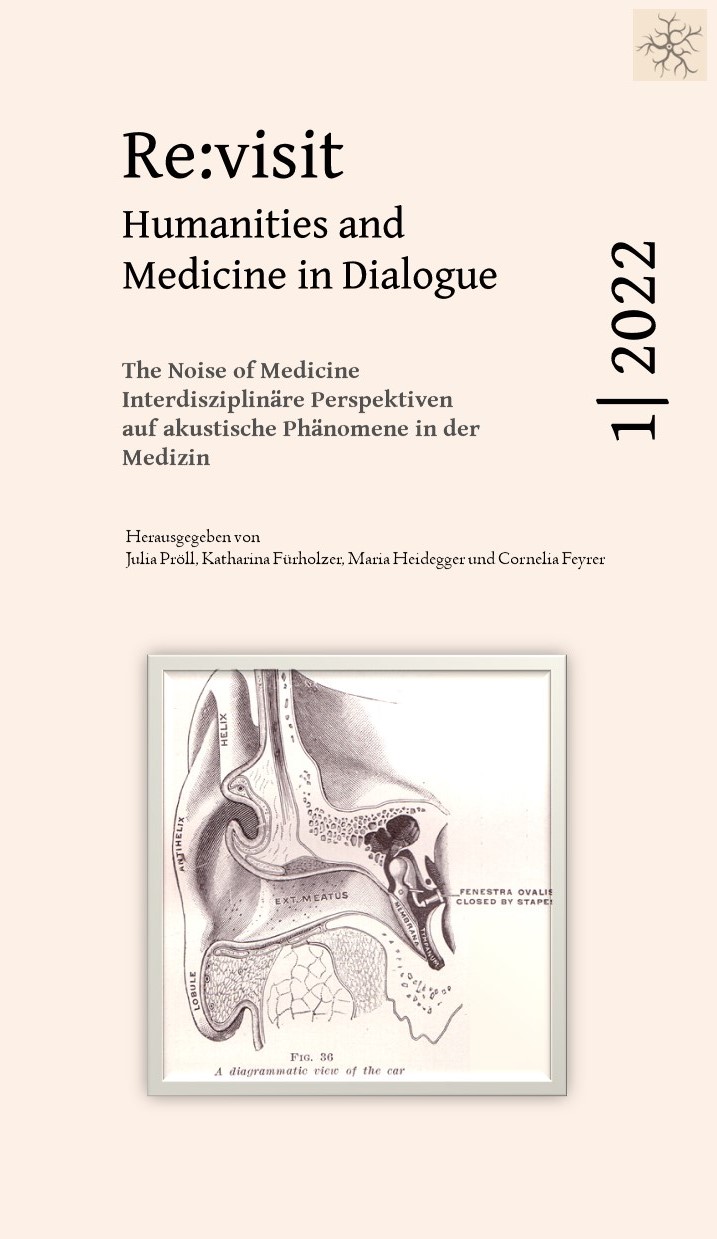Besser als Skrillex
Die Diskursivierung von MRT-Geräuschen
DOI:
https://doi.org/10.57974/Re:visit_2022_1.06Schlagwörter:
MRI noises, discourse analysis, Sensory Linguistics, practices of sharing experiencesAbstract
Magnet resonance imaging (MRI) is employed in medical diagnostic procedures and scientific research. The technology produces strong magnetic fields to visualize tissues and organs of the human body. During its operation the MRI machine makes extremely loud noises. This article shows how this very specific ‘noise of medicine’ is conceptualized within public and private discourses. The main hypothesis states that there are specific ‘discoursivations’ (‘Diskursivierungen’, i.e. constitutions of discoursive knowledge) depending on different kinds of communicative genres, text types and practices. The main research questions are: What linguistic procedures are employed to describe, scale and evaluate MRI noises? Is there a correlation between various conceptualizations and linguistic units of discourse (such as text types or genres)? The corpus contains expert literature, textbooks, explanatory videos, online discussion forums as well as narrative interviews with patients. The theoretical discussion is concerned with three topics: First, the term ‘discoursivation’ is explained with respect to linguistic methods of investigating the constitution and negotiation of knowledge in discourse. Second, communication forms, communicative genres, text types, linguistic practices and patterns of discoursivation are defined and differentiated. Third, some central notions of ‘sensory linguistics’, i.e. the study of the representation of perception in language, are presented, with a specific emphasis on results regarding the auditive perceptual field. The findings can be grouped into three conceptualizations of MRI noises. The first type is coined “MRI noises as phenomena of sound that can be scientifically explained”. In this discourse, the noises are very clear-cut physical entities with certain characteristics and an undisputable cause. This cause has no bearing on the medical examination method itself, apart from minor practical problems. This type is mainly reserved to the specialist texts and contains the construction of declarative, encyclopedic knowledge. This is not surprising, yet it is scrutinized as a way of escaping reflection on the noises, even in explanatory videos that are directed at patients. By doing so, emotional responses to the noises are delegitimized. The second conceptualization is termed “MRI noises as medical phenomenon”. This type revolves around the noises’ potential to seriously harm the health of patients. In addition to the declarative information similar to the first type, the emphasis is on action knowledge for medical personnel. However, patients are informed rather superficially (e.g. by standardized information sheets). Finally, the third type of conceptualization, “MRI noises as subjective experience”, is discussed more thoroughly. It is concerned with how patients narrate their experiences and discuss their perception of the noises with other persons such as the interviewer or fellow discussants in social media discourse. The cognitive script of an MRI examination can be derived from the interviews. There are certain strategies of describing and scaling the somewhat elusive quality of the noises (namely the use of adjectives, comparisons and imitation). Interestingly, narrating the individual reactions to the noises can be used as a tool of constructing one’s identity, for example as being robust to stress and pain. All in all, the MRI noises are a vividly debated noise of medicine.
Downloads
Veröffentlicht
Ausgabe
Rubrik
Lizenz
Copyright (c) 2022 Heike Ortner

Dieses Werk steht unter der Lizenz Creative Commons Namensnennung 4.0 International.






